- News
- Reviews
- Bikes
- Accessories
- Accessories - misc
- Computer mounts
- Bags
- Bar ends
- Bike bags & cases
- Bottle cages
- Bottles
- Cameras
- Car racks
- Child seats
- Computers
- Glasses
- GPS units
- Helmets
- Lights - front
- Lights - rear
- Lights - sets
- Locks
- Mirrors
- Mudguards
- Racks
- Pumps & CO2 inflators
- Puncture kits
- Reflectives
- Smart watches
- Stands and racks
- Trailers
- Clothing
- Components
- Bar tape & grips
- Bottom brackets
- Brake & gear cables
- Brake & STI levers
- Brake pads & spares
- Brakes
- Cassettes & freewheels
- Chains
- Chainsets & chainrings
- Derailleurs - front
- Derailleurs - rear
- Forks
- Gear levers & shifters
- Groupsets
- Handlebars & extensions
- Headsets
- Hubs
- Inner tubes
- Pedals
- Quick releases & skewers
- Saddles
- Seatposts
- Stems
- Wheels
- Tyres
- Health, fitness and nutrition
- Tools and workshop
- Miscellaneous
- Tubeless valves
- Buyers Guides
- Features
- Forum
- Recommends
- Podcast
review
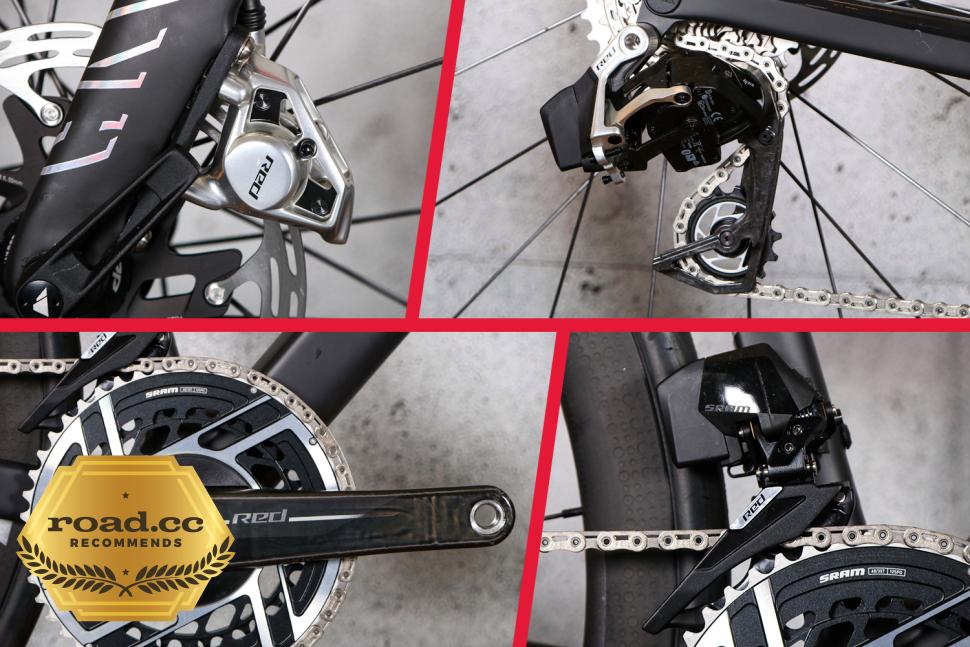 2024 Sram Red AXS.jpg
2024 Sram Red AXS.jpg£4,090.00
VERDICT:
Easily one of the best groupsets out there – if not THE best – thanks to its stunning performance, ergonomics and looks
Impressive braking power from new lever design
Great ergonomics boost comfort
Multiple crankset lengths
Backwards compatible with previous Red
Bulkier mech size than Dura-Ace
Weight:
2,461g
Contact:

This product has been selected to feature in road.cc recommends. That means it's not just scored well, but we think it stands out as special. Go to road.cc recommends
At road.cc every product is thoroughly tested for as long as it takes to get a proper insight into how well it works. Our reviewers are experienced cyclists that we trust to be objective. While we strive to ensure that opinions expressed are backed up by facts, reviews are by their nature an informed opinion, not a definitive verdict. We don't intentionally try to break anything (except locks) but we do try to look for weak points in any design. The overall score is not just an average of the other scores: it reflects both a product's function and value – with value determined by how a product compares with items of similar spec, quality, and price.
What the road.cc scores meanGood scores are more common than bad, because fortunately good products are more common than bad.
- Exceptional
- Excellent
- Very Good
- Good
- Quite good
- Average
- Not so good
- Poor
- Bad
- Appalling
For this latest release of SRAM's range-topping groupset, every component has been tweaked. Many of those tweaks are subtle, bringing a little refinement to the overall package, while others are much more pronounced, and they all combine to make SRAM Red AXS a stunning groupset both in terms of performance and ergonomics. The weight and price are also competitive, especially bearing in mind that a full groupset includes Hammerhead's brand new Karoo bike computer.
SRAM hasn't updated Red for quite a few years, and with the release of a new Force group last year it was only a matter of time before this groupset was announced to reaffirm Red as the flagship model, with improved performance, weight and ergonomics. It was definitely worth the wait.
I'll go through the exact details, component by component, in a second, but firstly let's take a look at how it performs as a complete group, on its own and against the competition.
SRAM sent us the new groupset about a month ago fitted to a Canyon Ultimate CFR frameset with Zipp 303 Firecrest wheels and the latest Goodyear Vector tyres, which means that even though the official launch is today, I've had plenty of time to use it and really get to know it. On top of that, thanks to plenty of review bikes passing through my hands this month, I've also been able to ride it side by side with Campagnolo's Super Record Wireless and Shimano's Dura-Ace.
Please, there really is no need to thank me – I'm willing to put myself through such hardships for you, our readers!
The biggest single change with Red is the gear/brake lever unit's ergonomics, and it is probably the largest selling point of the whole groupset for me.
SRAM has moved some gubbins about within the unit's body and the hood size has been reduced by a fair old chunk. I think it's fair to say that SRAM's earlier levers were on the chunky side with quite a pronounced hood shape, but this new unit looks slightly smaller than Dura-Ace's from the side.
It makes the lever units incredibly comfortable to use, allowing a natural position for my hands to settle into regardless of how I'm riding at the time. Whether climbing or descending, my hands always feel secure, even at high speed on poor road surfaces, and the brake levers are always within easy reach.
The new design has also improved the braking performance too, by reducing the amount of pressure you need to apply to the lever for a given amount of stopping power. SRAM claims single-finger braking and, trust me, it's a reality.
Like its predecessor, Red is a 12-speed system and still uses the paddle setup where one lever drops the chain down the cassette while the other side brings it back up. Pressing both the right and left at the same time moves the front mech to the opposite position.
It's a style that I have loved since I first used it, and the shifting is quick and precise. Big improvements have been made to the speed and control of the shifting of the front mech, which wasn't exactly slow in the first place.
In terms of performance against the main competitors, I'm sorry to disappoint or look as though I'm on the fence, but there is very little to separate them, although they all have their own personal traits.
The main difference is in the feel of each gear shift. If you have read my previous bike or groupset reviews you'll know that even on an electronic groupset I still like to detect some kind of chain movement as it travels from sprocket to sprocket, or chainring to chainring. I like a bit of mechanical interaction.
Dura-Ace is almost too light for my tastes, I prefer the slightly heavier feel of Campagnolo. Red is somewhere in the middle. Basically, if I had golden hair and was snooping around a bear family's house it would be SRAM's porridge bowl I'd be tucking into.
This is purely my own specific, some would say niche, thoughts on drivetrain performance, mind, we all have different tastes.
Now, I'll take you through the new groupset, component by component, in more detail.
HRD Shift-Brake System including hydraulic calliper
£675 left hand / £675 right hand
Weight: 689g pair
As I said above, the new lever body unit has changed dramatically over the previous model, which you can see in the picture below.
SRAM says that it has moved the primary piston from the pommel of the lever into the body of the hood. It's a push-piston design with a higher lever-pivot on the brake lever, which requires less force from your fingers to actuate the brakes.
Compared with the previous iteration, SRAM says this new design requires 80% less effort braking from the hoods and 33% less effort from the drops.
SRAM has also stiffened the two-piece calliper and moved the pressure of the piston and pads further outboard onto a more usable space of the rotor.
The braking performance is very impressive indeed, and smooth too. There's loads of modulation on offer as you get a great feel through the lever which allows you to adapt your braking power to the conditions beneath your tyres.
In terms of the hood and lever shape there is also lots of change. The main point, as I said, is the reduction in the size of the hood area. Its circumference is smaller, although the actual length of the upper part of the unit is 5-7mm longer. A much more curved brake lever means that its base still finishes in pretty much the same position as the earlier model. With the clamp mounted in the same position on your handlebar as the old model, the top of the brake lever sits seven degrees higher, giving a more natural position.
SRAM has also built in plenty of adjustment – both in terms of reach (2.5mm) and, separately, pad contact; you can tweak where the lever sits to minimise or maximise the throw of the brake lever before it makes the pads contact the rotors.
Another neat inclusion is the Bonus Buttons found on each lever; you can see them on the inside of each hood at the top. Out of the box each is set as a standard shifter by default, but should you want to you can connect it to any AXS or ANT+ device – using it to scroll through pages on your computer, for instance, without taking your hands off the handlebar.
You can set this up via SRAM's AXS app. This app is easy to use and allows you to install the groupset quickly while getting all of the components to speak to each other. You can also personalise how your gear shifters respond and things like that.
Crankset
£700 no power meter; £1,200 with power meter
Weight: 545g (48/35T, no power meter); 580g (48/35T with power meter)
The Red crankset is available in two options with either one (1x) or two (2x) chainrings in place.
The 2x is available off the shelf in 50/37T, 48/35T and 46/33T chainring options, and to reduce weight while increasing stiffness the chainrings are a one-piece setup made from aluminium alloy, mated to carbon fibre cranks.
SRAM's take on stock crankset chainring ratios is a little different to, say, Shimano's; Shimano has stuck with the tried and tested 52/36T and 50/34T on its road groupsets, while adding a 54/40T to replace the traditional 53/39T.
With its cassettes generally running a 10-tooth smallest sprocket, SRAM can go with smaller chainrings on the whole without sacrificing speed and those 'power' gears.
I am especially a fan of the 48/35T setup as I find that I can stay in the larger chainring on rolling routes and just find it generally more efficient than the 52/36T or 50/34T on my own bikes. It suits me anyway, as someone who doesn't race any more. I find that the 48/35T covers the spread of gearing I need for general fast road riding without any sacrifices.
Both the 1x and 2x cranksets are available with SRAM's power meter, which gives readings accurate to +/-1.5% and isn't affected by climate conditions. I found it worked excellently with no issues whatsoever, and measures right and left leg power balance.
Thanks to that tweaked front mech, shifting across the chainrings is brilliant, dare I say it, faultless. Even under heavy load the chain switches from one ring to the other without any drag or noise, and you don't need to back off the pedals at all when shifting.
The 1x crankset comes with a 50T aero chainring, and because of that spread of gears on the cassette I have found that SRAM's groupsets work very well as 1x on the road.
Both cranksets use SRAM's DUB bottom bracket design and are available in a large range of crank lengths, including 160, 165, 167.5, 170, 172.5 and 175mm.
Should the above chainring options not be to your liking then SRAM has you covered with 52/39T, 54/41T and 56/43T builds, and 48T or 52T in a 1x option.
You have to buy these as cranks and chainrings separately: £400 for the cranks, while the chainrings are £800 and include the power meter, or £240 1x without a power meter.
Front Derailleur
£450 (battery not included)
Weight: 145g
For 2024 the front derailleur or mech has a narrower front cage which means less distance to move, especially on the outboard shift, which gives a much faster gear change between the two chainrings. Something that is definitely noticeable over the previous version.
Having a narrower cage does mean a higher risk of the chain rubbing it as you pedal, but like other electronic front mechs it has auto trim, which means it will move slightly in relation to where you are on the cassette to avoid chain rub and the noise that comes with it.
The front mech also works with every chainring size option available.
Rear Derailleur
£700 (battery not included)
Weight: 262g
The refined rear derailleur covers cassettes from 10-28T up to 10-36T and has larger pulleys to increase efficiency.
A neat thing is that it has been designed with both 1x and 2x systems in mind, as it has an Orbit fluid damper which stops it and the chain flailing about, so you don't need to worry about the chain coming off the 1x chainring on account of having no front mech.
The front and rear mechs don't look as svelte as they do on Shimano Dura-Ace, and from an aesthetics point of view I prefer DA, but the Red system is truly wireless, so each mech has to carry its own battery.
And when you look at how small the units are overall, they are still very impressive – certainly a lot more diminutive than the Campagnolo Super Record offerings.
Speaking of batteries, SRAM reckons you'll get around 60 hours of riding out of them, although that obviously depends on how many gear changes you make. Charging is simple: you just pop them out and into the charge unit, and even from flat you are only looking at a couple of hours to full.
One cool thing is that both mechs use the same battery (take note, Campag) which means if one goes flat on a ride, you can switch them over to select a get-you-home gear.
Cassette
£390 all configs except 10-36T, £410; Rainbow £450 (£470, 10-36T)
Weight: 180g (10-28T)
SRAM offers the XG-1290 cassette in four configurations: 10-28T, 10-30T, 10-33T and 10-36T. Loads of options there for all kinds of riding styles.
The downside to offering such wide ratios on each cassette is that the jumps between sprockets can be a little gappy, especially the 10-36T. But SRAM has specced them so you get much smaller jumps towards the smaller sprockets, which helps you keep a smooth cadence speed on rolling terrain, with the bigger jumps at the larger sprocket end where it's not so critical to keep the same cadence as you'll likely be climbing.
I never found myself in between gears, and the shifting quality doesn't change regardless of how big the jumps are.
All the cassettes are designed to fit SRAM's XDR freehubs and come in either the standard silver or Rainbow colour, the latter costing an extra £60.
Red E1 Flattop Chain
£90, Rainbow £110
Weight: 236g
SRAM's Flattop chains have, as the name suggests, a flat top edge. SRAM says this shape allows for a narrower chain with quieter operation. It certainly is a very smooth and quiet setup.
It has dropped 13g over the previous Red chain and uses hollow pins for joining the plates. Those plates are hardened chrome on the inner side for reduced wear, and the chain is joined by a PowerLock connector – you can buy a replacement pack of four for £17. Handy if you are going to be splitting and rejoining the chain on a regular basis.
It's available in both 114 and 126 link lengths, and in either the standard or Rainbow colour finish.
Paceline X Rotor
£70 each
Weight: 140g pair (160mm)
Not much has changed here: the Paceline aluminium rotors are available in either 140mm or 160mm diameters and mounted to an aluminium carrier.
The only update is to the carrier design. It's smaller, without any aero style channels between the rivet points, which means less material and less weight.
After an initial bedding in process the braking performance was very impressive, as I said earlier. Quiet too.
Hammerhead Karoo Computer
£450
Weight: 118g
Not technically a Red component, but it's designed to offer a huge amount of connectivity with SRAM's kit, and if you do buy a full groupset then Hammerhead's brand new Karoo is included in the price.
You can read my thoughts on how it performed in this separate review.
Weight
As you'd expect, Red has been on a bit of a diet for this latest edition so has dropped a few grams, although as the last version wasn't exactly a bloater I wasn't expecting a huge shedding of weight.
The previous version of Red with a power meter was 2,650g while this new one is 2,496g.
SRAM gives a breakdown of which components it includes in that too: a 10-28T cassette, 48/35T crankset with power meter fitted, 114-link chain and all batteries. It also includes hydraulic fluid in the brake lines.
With a standard 48/35T crankset (no power meter) that weight drops to 2,461g.
When we reviewed the Shimano Dura-Ace R9200 groupset with power meter we weighed that at 2,507g.
Campagnolo's Super Record Wireless nudged our scales up to 2,571g (excluding brake hoses but including batteries) when I reviewed it, although that was without a power meter as it has only just been released.
Pricing and value
SRAM Red is available at £3,000 for a groupset. 'A bargain!' I hear you cry, but be aware that doesn't include the crankset or cassette because of the number of possible variations.
Add on £700 for a standard non-power meter crankset and a minimum of £390 for the cassette and you are looking at £4,090 in its cheapest guise.
Although the individual prices for the mechs above show no batteries, if you were to buy Red as a groupset they are included in the price. You will need to add a DUB bottom bracket, though, that fits your bike.
The exact build we have here includes a power meter, which puts the price up to £4,590.
And what all of them also include is one of those brand new Hammerhead Karoo computers, which has an RRP of £450. If you take that into account then Red as a groupset is well priced, I'd say.
Campag's Super Record Wireless costs £4,500 for the non-power meter groupset, and adding one sticks around another grand onto that. So little change from £5,500.
Dura-Ace is a few hundred quid cheaper than Red – it was £4,281.87 with the power meter crankset or £3,631.87 without when we reviewed it in 2021, and a look at current prices shows it's still around that by the time you take into account the addition of batteries and cables – but with Red you are getting the Hammerhead Karoo, which I'd say brings things level.
Conclusion
How does it stack up, then?
Well, I think out of these three range-topping groupsets Red is the one I would go for.
Dura-Ace might have marginally lighter and faster rear shifts if you ride it and Red side by side, but we really are talking about the width of a gnat's appendage here and not enough of a benefit to sway me towards the Japanese brand. Campag – well, I love using that too, but SRAM has matched it in shifter ergonomics and it's expensive.
SRAM has nailed the shape of the levers here and the shifting/braking performance that comes with it. I think it is a stunning looking groupset too, especially the crankset/chainring combo, and the price – while still a chunk of cash – is competitive.
The quality is absolutely top notch throughout. All of the materials that your hands come into contact with feel plush and comfortable, and it has coped with all kinds of poor weather over the last month.
Being completely wireless it's easier to set up, too, and you can also carry spare batteries in your pocket if you were riding some kind of adventure or cycling holiday where you didn't have access to charging facilities.
SRAM has really done a great job with this groupset, improving performance impressively while managing to trim a touch of weight in the process.
Verdict
Easily one of the best groupsets out there – if not the best – thanks to its stunning performance, ergonomics and looks
road.cc test report
Make and model: SRAM Red AXS
Size tested: 48/35T chainset, 10-33T cassette
Tell us what the product is for and who it's aimed at. What do the manufacturers say about it? How does that compare to your own feelings about it?
SRAM says, "Every part of RED has been refined to create an effortless ride. Light brake feel and comfortable ergonomics, smooth front shifting, fully wireless connectivity, and expanded gearing choices fit every rider and their needs. RED is packed with features, like accurate and reliable power measurement, new shift points, and more brake adjustability, while still shaving grams off every component to bring you the lightest electronic groupset ever. Riding isn't effortless. RED is."
It's a groupset with stunning performance, ergonomics and aesthetics.
Tell us some more about the technical aspects of the product?
SRAM lists these features:
* One finger braking from the hoods or the drops
* 83 g lighter than previous generation
* AXS enabled for easy setup, personalization, and reliability
* eTap shift logic for intuitive shifting
* Bonus Button provides ANT+ device control or auxiliary shift option
* Optimized hood shape fits the widest range of hand sizes
* Carbon brake lever for light weight
* Textured shift paddles and hoods for control and comfort
* Bleeding Edge technology for easy and clean bleeds
* Reach Adjust to personalize fit for more hand sizes
* Contact Point Adjust to personalize brake engagement
Rate the product for quality of construction:
9/10
Rate the product for performance:
9/10
Rate the product for durability:
8/10
Rate the product for weight (if applicable)
8/10
Rate the product for comfort (if applicable)
9/10
Rate the product for value:
5/10
Tell us how the product performed overall when used for its designed purpose
It does everything a high-end groupset should. The shifting is fast and precise while the braking offers huge levels of modulation and power.
Tell us what you particularly liked about the product
Newly designed hoods are very comfortable.
Tell us what you particularly disliked about the product
Nothing.
How does the price compare to that of similar products in the market, including ones recently tested on road.cc?
It is much cheaper than Campagnolo Super Record Wireless in a like-for-like build, and while it's a little more expensive than Shimano Dura-Ace, you do have to take into account that a £450 Hammerhead Karoo computer is included in the Red groupset price.
Did you enjoy using the product? Yes
Would you consider buying the product? Definitely
Would you recommend the product to a friend? Absolutely
Use this box to explain your overall score
Personally I think this new Red groupset hits every mark absolutely spot on, to the point where I consider it to be near faultless in comfort, performance and quality, which is why I have no hesitation in giving it 9; it's excellent.
About the tester
Age: 44
I usually ride: This month's test bike My best bike is: B'Twin Ultra CF draped in the latest bling test components
I've been riding for: Over 20 years I ride: Every day I would class myself as: Expert
I regularly do the following types of riding: time trialling, commuting, club rides, sportives, fixed/singlespeed,
Since writing his first bike review for road.cc back in early 2009 senior product reviewer Stu has tested more than a thousand pieces of kit, and hundreds of bikes.
With an HND in mechanical engineering and previous roles as a CNC programmer/machinist, draughtsman and development engineer (working in new product design) Stu understands what it takes to bring a product to market. A mix of that knowledge combined with his love of road and gravel cycling puts him in the ideal position to put the latest kit through its paces.
He first made the switch to road cycling in 1999, primarily for fitness, but it didn’t take long for his competitive side to take over which led to around ten years as a time triallist and some pretty decent results. These days though riding is more about escapism, keeping the weight off and just enjoying the fact that he gets to ride the latest technology as part of his day job.
Latest Comments
- JoanneH 17 min 13 sec ago
I've just invested in a new bike and it's got 165mm cranks, which were both the crank length associated with the frame size but also what my bike...
- Rendel Harris 18 min 4 sec ago
As one had every reason to suspect, your video proves there is absolutely no justification in the police pursuing this action against you. Your ...
- Secret_squirrel 20 min 26 sec ago
Its not showing as orderable on the Fairlight website as yet though... still the V3.
- Smidge69 35 min 15 sec ago
Im not at all happy with these. I have them in 34. The issue is that the rubber is sufficiently soft, tacky (and presumably therefore grippy) that...
- chrisonabike 52 min 27 sec ago
Amen, brother....
- Rendel Harris 1 hour 18 min ago
I really wish the powers that be would station a few security guards in the crowd at big events like the world championships and tell them to grab...
- bensynnock 1 hour 29 min ago
I think they're probably more happy with the 20mph limits and then just driving as fast as they like, as they do currently.
- ACyclingGuitarist 2 hours 6 min ago
I ride to and from Manchester from where I am (just out of Bolton) and the standard of driving you see is shocking, from both a cycling and driving...
- JRogerson 2 hours 42 min ago
I'd be cautious with the £10 per month TNT offering and your expectation of what you'll get. I suspect it will simply be access to the channels....
- The_Ewan 2 hours 53 min ago
If they also have the abilty to switch from dipped to 'full beam' they'd be interesting to know about....



















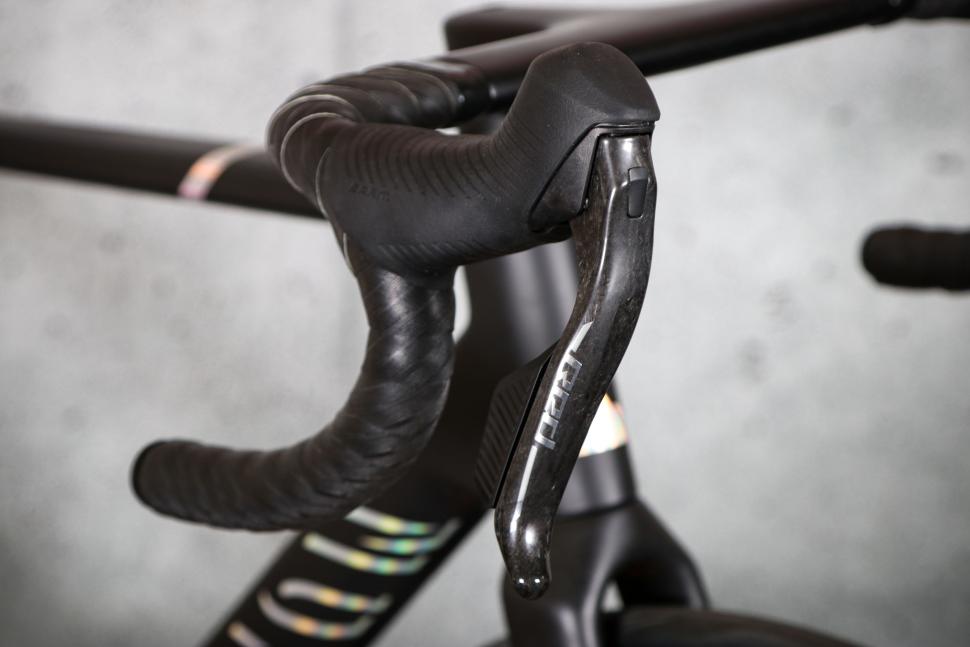
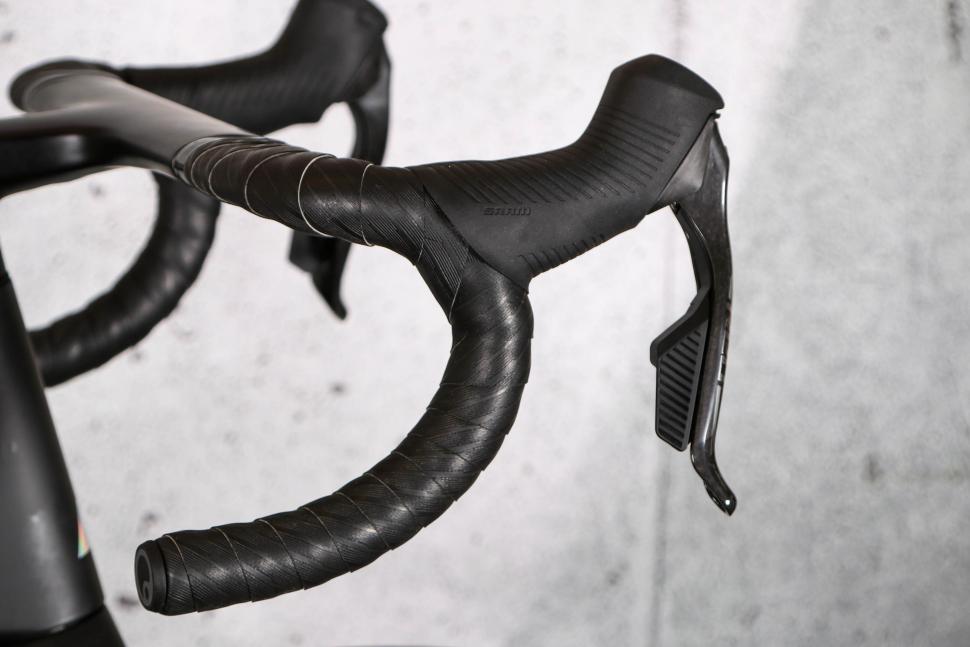
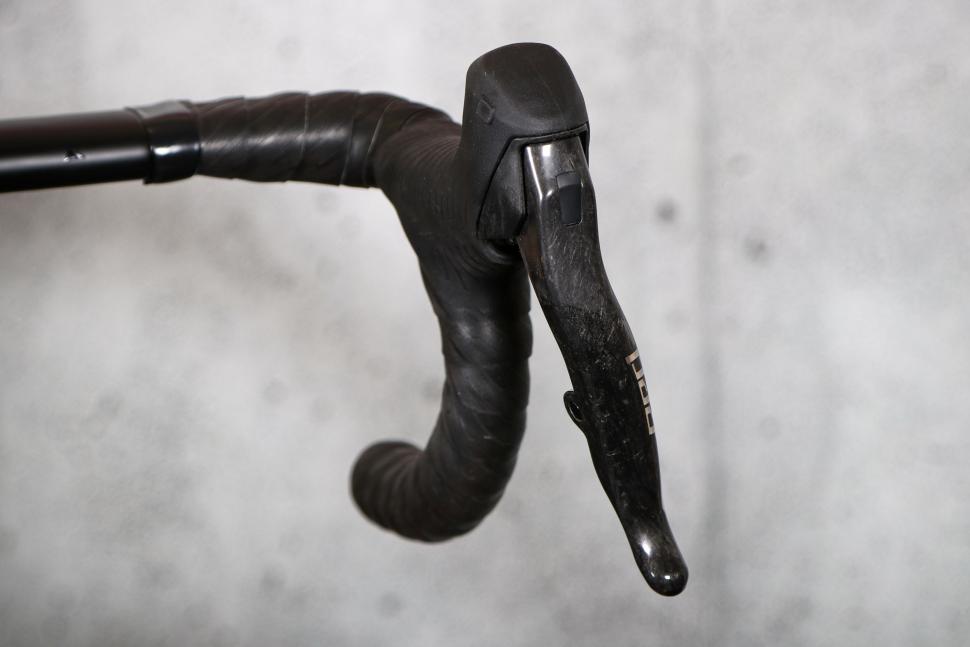
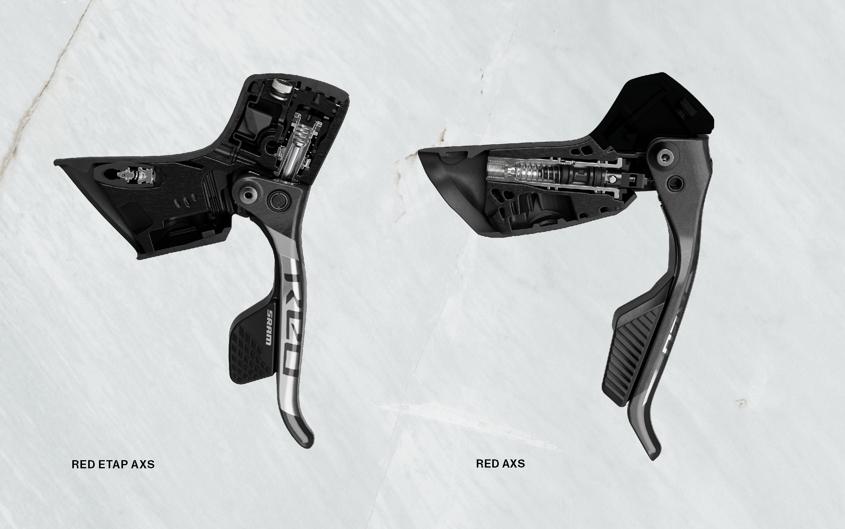
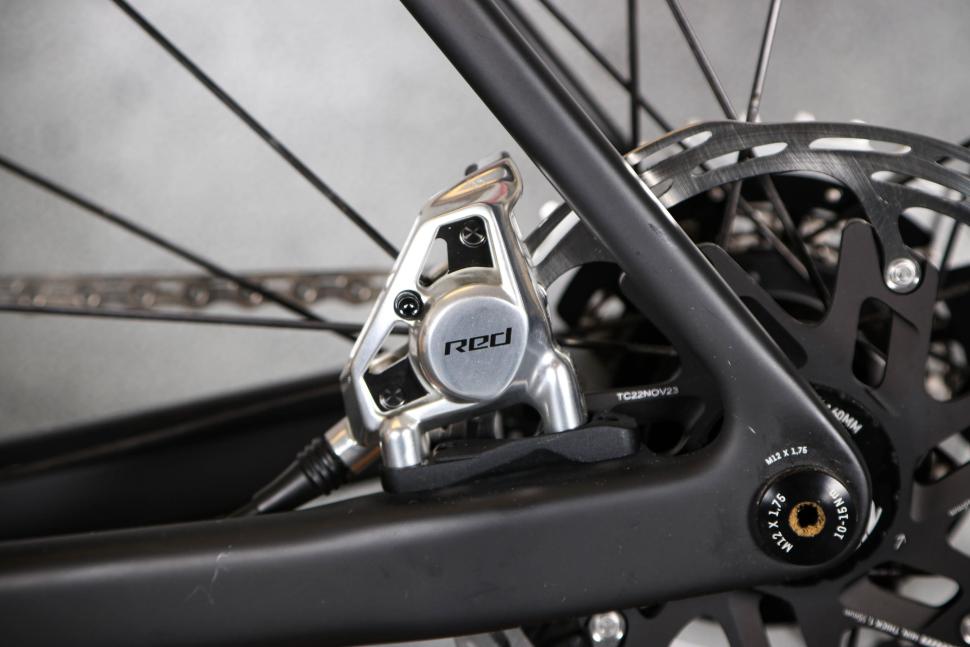
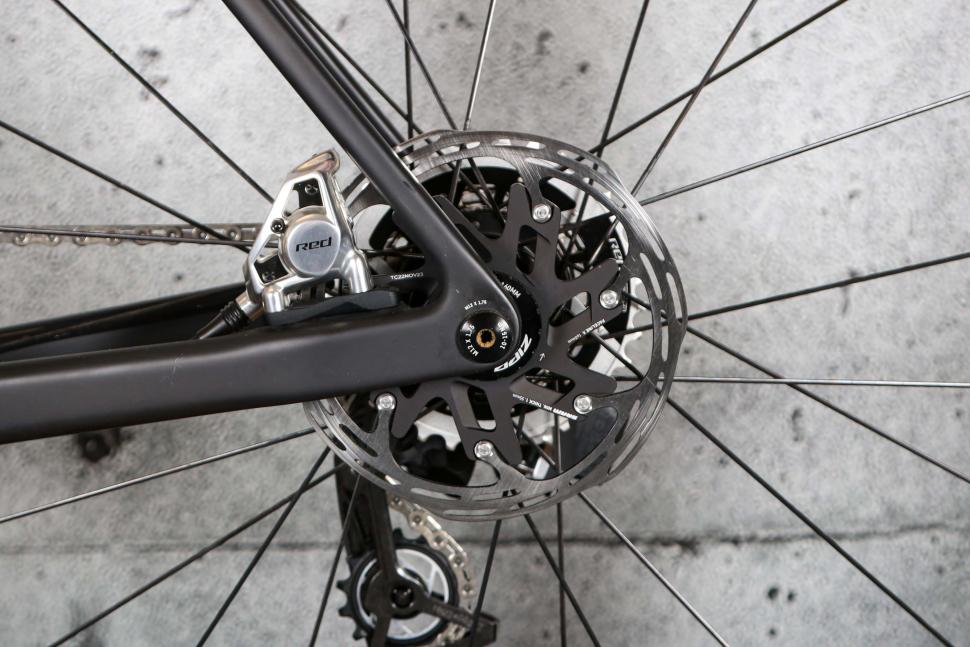
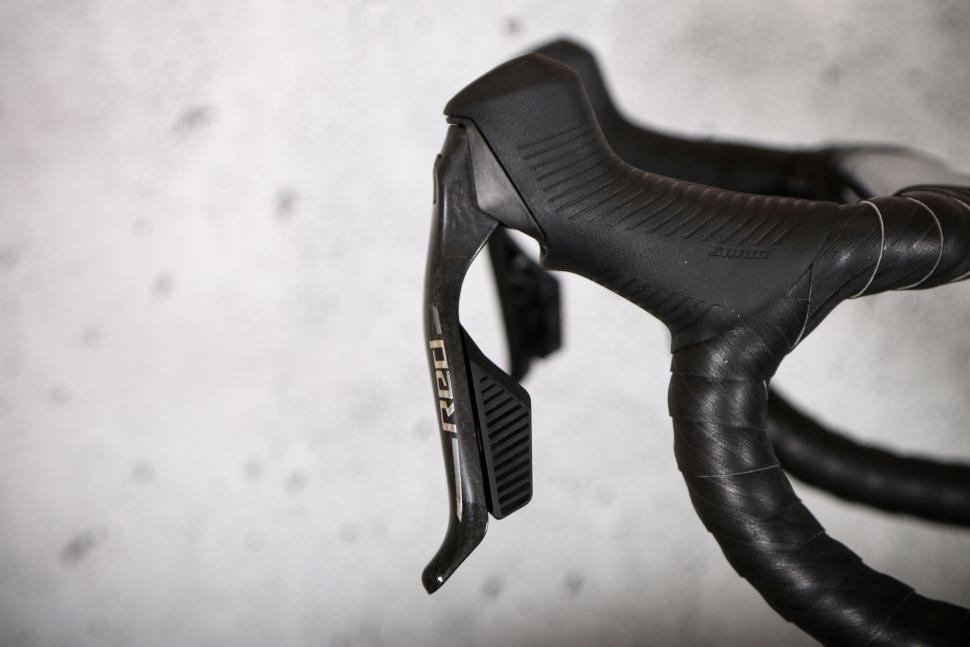

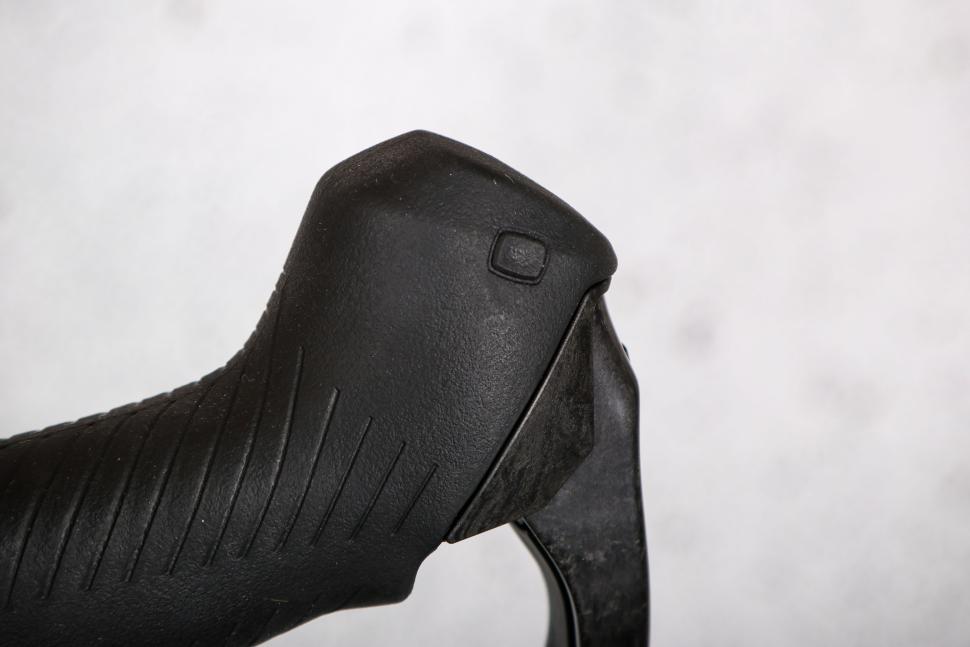

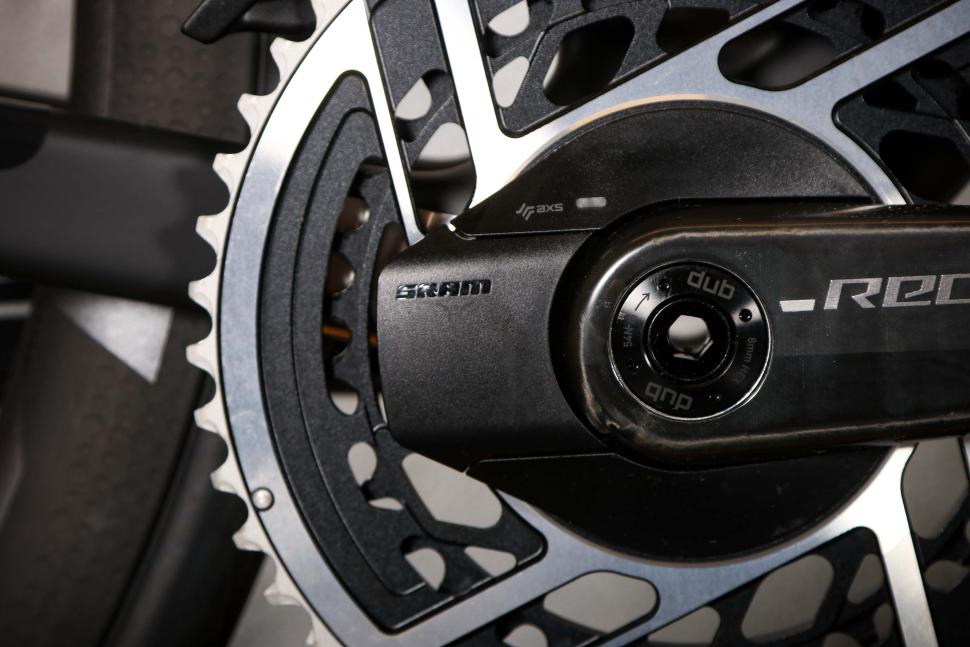
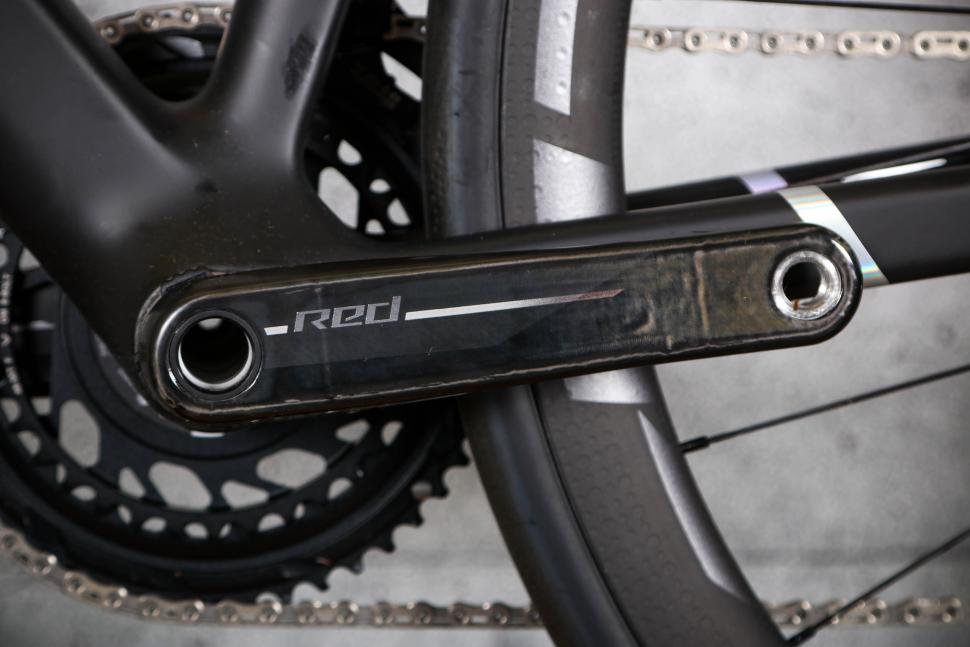
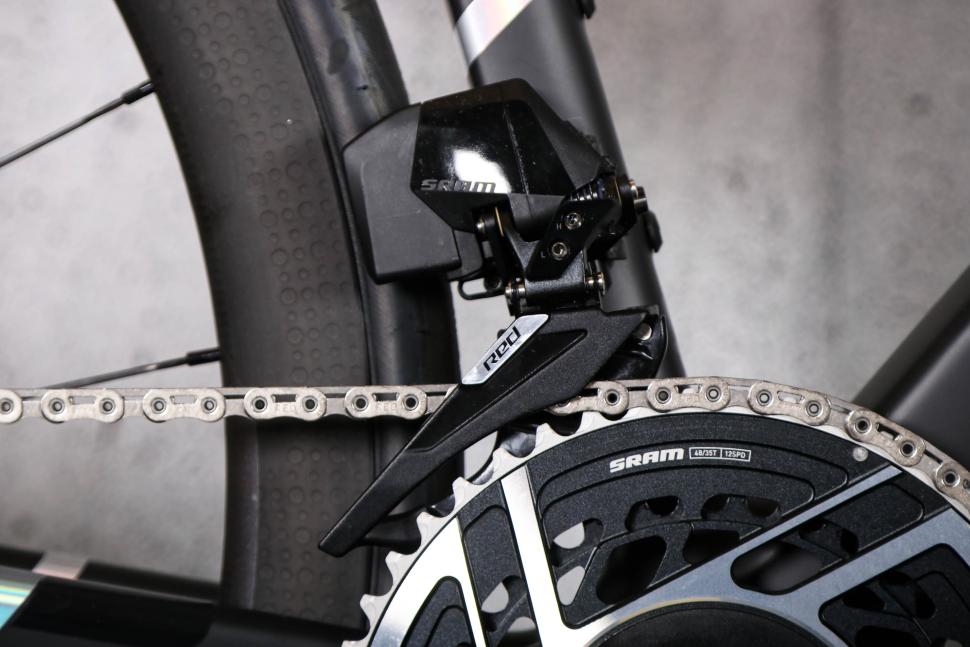
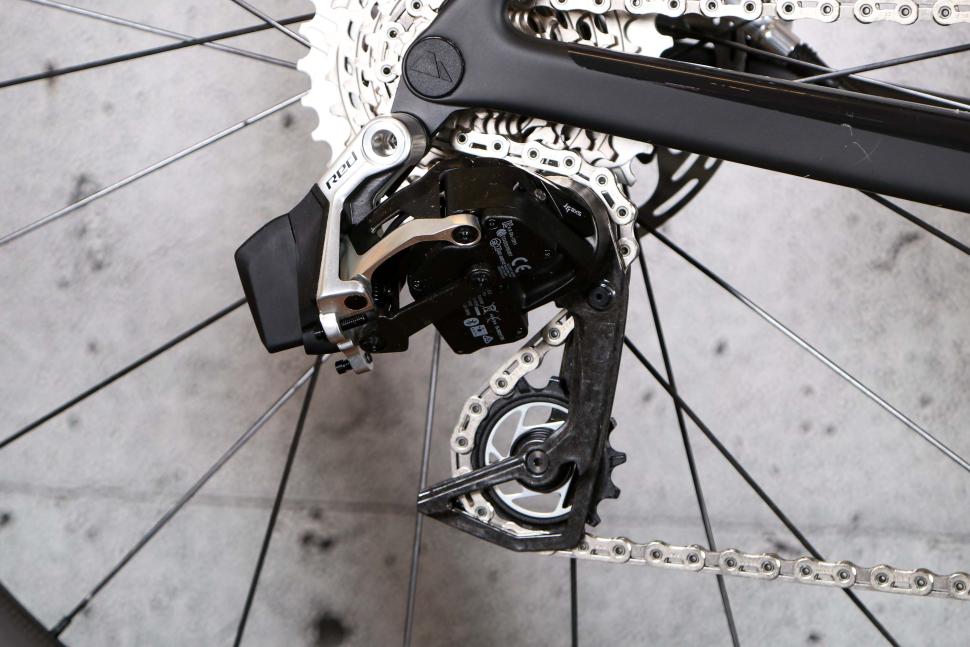
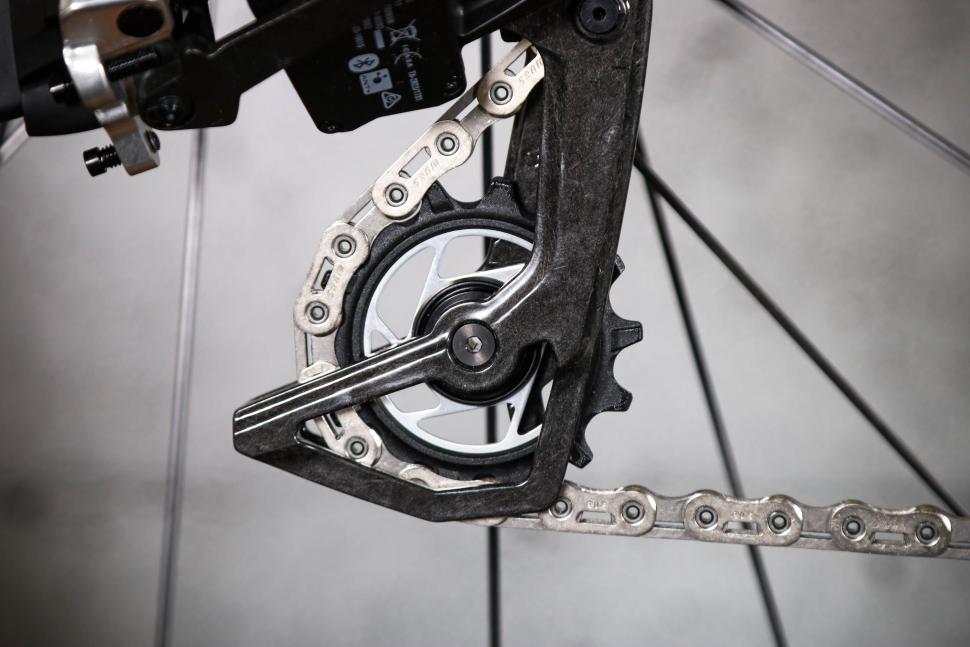


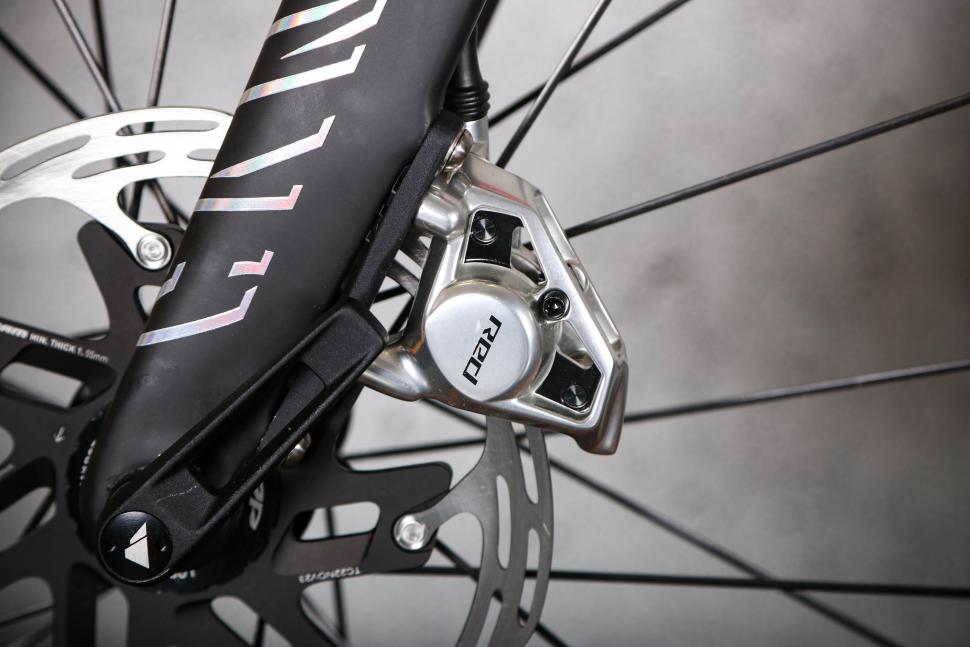



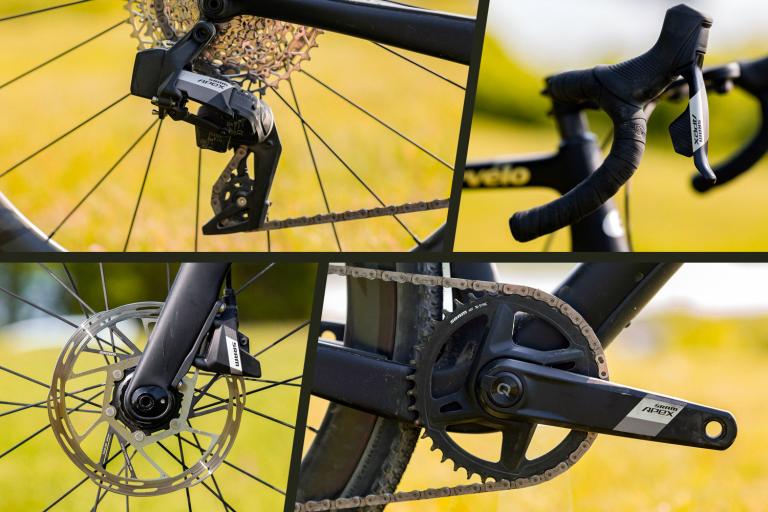
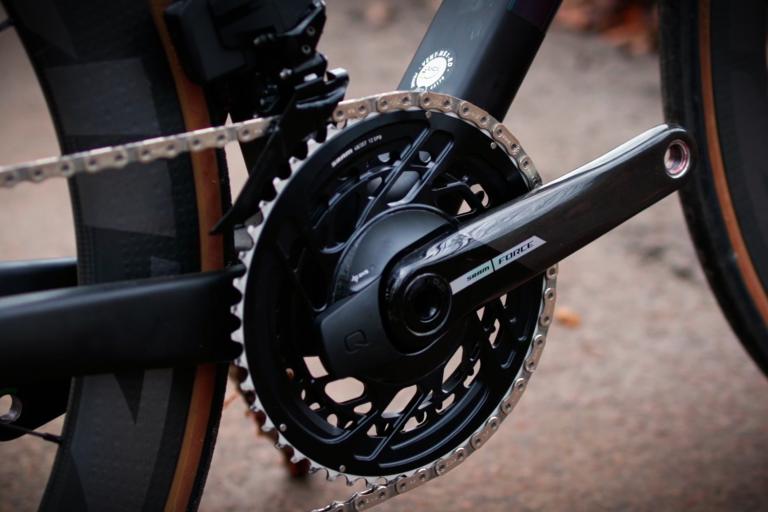
Add new comment
8 comments
> One cool thing is that both mechs use the same battery (take note, Campag)
Minor detail but I understand Campag are locked out of that obviously desirable design through existing Sram patents.
Cause the idea of having batteries be in a standard size is _so_ innovative!
Ridiculous patent system.
I don't know this for sure, but I suspect that there was thought to be something innovative in the idea of providing removable batteries on each derailleur in the first place. Making them interchangeable is an advantage that builds on that feature.
There is so much prior art of things that use standard sized removable batteries that I have difficulty seeing this. I'd like to see Shimano or Campagnolo challenge this rather than just accept it but then that might mean that some of their own dodgy patents might be challenged in return.
standard sized, interchangeable batteries is the norm, across many many many different kinds of products, for many many years now.
But somehow taking that blatantly obvious, normal and long-practiced "idea" and applying it to a new product is "innovative". Shame on the patent lawyers and examiners who allow this to happen - but then, they have a vested interest in foisting this parasitical drag on the economic activity of the rest of society.
I am not as sure as you are that the patent system, in general, is a "parasitical drag on economic activity". Perhaps you have some evidence to support that claim?
I agree with your point about standard-sized, interchangeable batteries being commonly used in other products. But if the prior art in bicycle drivetrains was electronic front and rear derailleurs both wired to a single battery housed elsewhere on the bike, then the idea of placing individual batteries on the derailleurs themselves and making them removable and interchangeable was novel. In my view there is a good argument that this is a non-obvious alternative to, for example, the Di2 system.
I have no idea whether derailleurs with individual batteries were already prior art in 2012 or whenever the SRAM patents were filed. If they were, I might take a different view.
It would only be non obvious to a very young child or a fool, it is supposed to be non obvious to someone familiar with that field of engineering.
To think such an obvious 'feature' was awarded a patent tells this legal layman that something is seriously wrong with the ease at which patents can be used as tool to stifle innovation and the seeming obliviousness of the issuer to the technological significance (lack thereof) of the patent itself.
SRAM needs to open their battery design to all competitors like they did with the universal deraillleur hanger and innovate by actually innovating rather than creating arbitrary anti-consumer legal obstacles.